O'Casey Dramatises the Post-War Depression
"There was no importance in trying to do the same thing again, letting the second play imitate the first, and the third the second." - O'Casey, Rose and Crown (1952)
Within the Gates (1934) has never before had a production in the south of Ireland: in Belfast, yes, at the Lyric Players Theatre, but not in Dublin. It was too big a play, too challenging, too different for the Abbey or even the more adventurous Gate to contemplate. To be sure, after Yeats and O'Casey and Yeats were reconciled in 1935 over the fateful rejection of O'Casey's anti-war play The Silver Tassie, the Abbey did briefly consider Within the Gates before plumping at last for the Tassie to predictably acrimonious disapproval. Within the Gates was both ahead of its time (T.S. Eliot's use of the chorus for middle-class drama was to follow) and influential (Beckett's novel Murphy was to use a London public park, a prostitute, and a dreamer in similar if understated style).
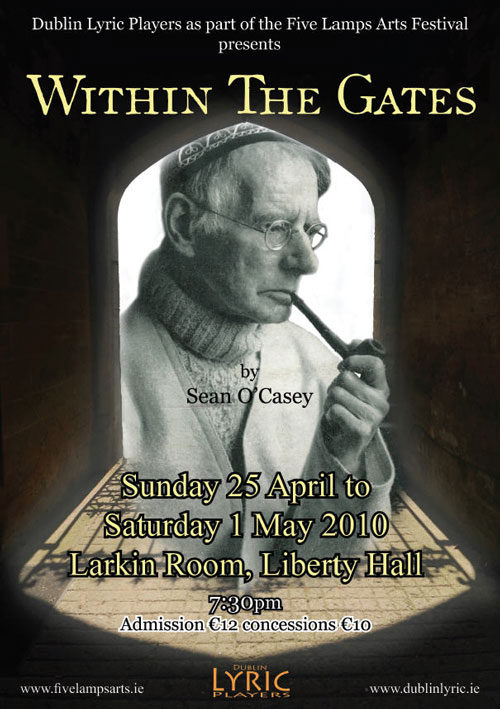
The four scenes which make up 'Within the Gates' are set in a London Park during four times of the day and over the four seasons of the year.
Scene I - On a Spring Morning.
Scene II - On a Summer's day at Noon.
Scene III - On an Autumn Evening.
Scene IV - On a Winter's Night.
The time scheme alone is difficult to translate into theatrical terms, calling for atmospheric lighting effects, and O'Casey first thought it would work better in 'a film of Hyde Park'. To that end he surprisingly tried to interest Alfred Hitchcock in the project, as Hitchcock had filmed Juno and the Paycock in 1930. The idea fizzled out, however, and O'Casey pressed on to turn it into a stage play which opened at the arty Everyman Theatre in London on 7 February 1934 to a mixture of admiration and puzzlement. The director was out of his depth. O'Casey had his first flop. A far more ambitious production in New York was to offer some consolation later that year but Within the Gates has rarely been performed since.
Audio recording of Dublin Lyric producion
A recording of the Dublin Lyric production of 'Within the Gates' was made at one of the performances in Dublin. Set in a busy London park in the early 1930s, this allegorical play is divided into four parts representing each season.
To listen to one of the audio files below, which were recorded for research purposes only, click on the play button.
| Audio | Description |
| Scene I - On a Spring Morning. (Duration: 30m:16s) | |
| Scene II - On a Summer's day at Noon. (Duration: 25m:43s) | |
| Scene III - On an Autumn Evening. (Duration: 30m:57s) | |
| Scene IV - On a Winter's Night. (Duration: 36m:06s) |
The original recording was made by Harry Bradshaw.
Characters in the Play |
|
The Dreamer |
Patrick Dunne |
Older Chair Attendant |
Michael Thornton |
Younger Chair Attendant |
Jim Reid |
The Bishop |
Michael O'Sullivan |
The Bishop's Sister |
Mary Dowling |
The Atheist |
Declan Brennan |
The Policewoman |
Joanne Mallon |
1st Nursemaid |
Rebecca McLoughlin |
2nd Nursemaid |
Isla Jeffrey |
A Guardsman |
Peter Williamson |
A Gardener |
Connolly Heron |
1st Evangelist |
Jess Dunne |
2nd Evangelist |
Ciara Gallagher |
The Young Woman |
Jennifer Barrett |
A Young Salvation Army Officer |
Johnny Williamson |
The Old Woman |
Margaret Toomey |
A Man Wearing a Bowler Hat |
Peter Prior |
The Man with a Stick (later an umbrella) |
Frank Lonergan |
A Man Wearing a Trilby Hat |
Joanne Mallon |
A Man Wearing a Straw Hat (afterwards a cap) |
Connolly Heron |
Dancers and a Crowd of Down and Outs |
Jess Dunne, Ciara Gallagher, Isla Jeffrey, |
|
|
Director |
Conor O'Malley |
Setting visualisation |
John Ryan and Alan Worrall |
Flute and Music Arrangement |
Margarite Collins |
Dance and movement |
Evelyn O'Malley and Duane Watters |
Poster Design and Photography |
Declan Brennan |

Jennifer Barrett as 'The Young Woman'
Programme notes
The play remains a beautiful failure and a challenge to the modern director. Though it contains many faults in the writing it is nevertheless a wonderful, poetic and courageous experiment, as much a musical as a play.
Rooted in seasonal ritual it attempts what an O'Casey play always attempts: to show life in an epic sweep but concentrated into a series of scenes in which humour and gaiety are intermingled with the most serious questions, abuse, harassment, misogyny, the church, responsibility, death and salvation.
The spring carnival of comedy is combined with the autumnal collapse of tragedy. Shakespeare's 'a dog's obeyed in office' becomes with O'Casey a pageant-like enactment of human duplicity. Between the comedy and the tragedy of life comes O'Casey's brisk and savage satire of authoritarianism civil and religious.
The premise of Within the Gates is the Dreamer's remark on the despairing chorus of Down-and-Outs, those 'who whine through today and dread tomorrow': 'No one has a right to life who doesn't fight to make it greater.'
Speakers' Corner has its counterpart on today's radio and television, for instance on the afternoon radio phone-in show `Liveline' and the current affairs programme 'Frontline' on television. Looked at afresh, Within the Gates to an uncanny degree explores several issues which have become urgent again today. The Bishop with his guilty secret; the Young Woman (Jannice) with her bad memories of the early life in a Catholic orphanage which destroyed her; the general sense of betrayal by those in authority of the ideals for which patriots died.
Though mockery hovers around the various men in bowler and other hats, Salvation Army and other evangelical uniforms, while even the working class Gardener and deckchair attendants are shown up as hypocrites, the general feeling tends towards despair over the hard times: 'Oh, Jesus, is there no rest to be found anywhere!'
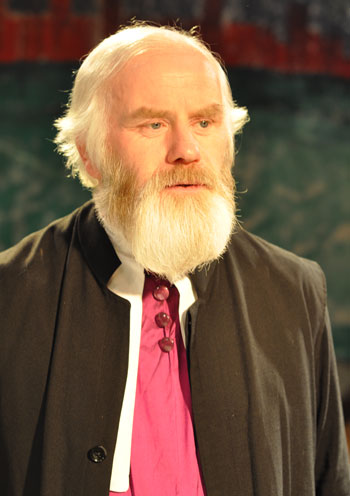
Michael O'Sullivan as 'The Bishop'
Yet O'Casey disallows despair. His central characters, Jannice and the Dreamer, the whore and the artist, remain defiant and exuberant in the face of the worst that is to come.
Sex and celebration are elevated in the play above conventional religion and conformity. Herein lies the subversive heart of this post-war pageant.
'If I go,' says Jannice, referring to the heart condition which leaves her victim to exploitation at every male hand, `I'll go game, and die dancing.'
When the play reaches a climax (in winter darkness) in the struggle for Jannice's soul between the Down-and-Outs, the Bishop and the Dreamer we know the struggle is for more than a woman's virtue or salvation, but for the soul of a diseased society not unlike our own.
The programme notes above were written by Christopher Murray.
Like most of O'Casey's later plays, 'Within the Gates' is full of symbolism and fantasy. Entwined within the drama are the views that became the recurring themes of his work.
The seasonal structure of 'Within the Gates' sets out to portray life in an epic sweep, but confined to a sequence of scenes that mix laughter and tears in equal measure. It raises serious questions about abuse, harassment, misogyny, the church, responsibility, death and salvation.
The light, airy touch of Spring complete with its comedy progresses through Summer and Autumn to a tragic end in Winter. Along the way, O’Casey delivers his satirical take on both civil and religious authority.
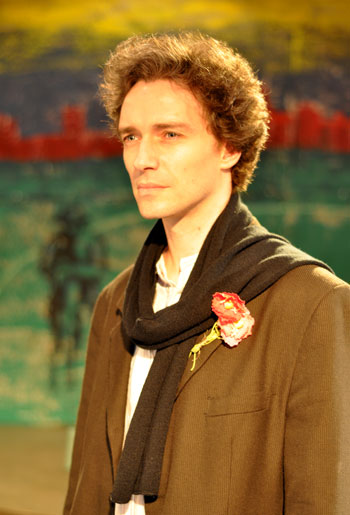
Patrick Dunne as 'The Dreamer'
This expressionistic morality play (one of O'Casey's least-produced works) has had a very mixed reception by audiences and critics alike.
To some it is a heavy polemic against modern man, who is devoid of spirit and a slave to mass conformity. To others it presents an elegant and poetic debate conducted between the opposing pillars of the Bishop and the Atheist balanced, if not reconcilled, in the person of the poet, the Dreamer.
It's clear that O'Casey identifies with and is sympathetic to the Atheist in a way that he is not to the Bishop. The Atheist gives voice to compassion when he is seen to look after the Young Woman. He also gives expression to O'Casey's own impatience with ignorance and superstition when he reacts angrily to her as she talks about how "Green-eyed, barrel-bellied men glare and grin at me...". The Atheist responds "The hell en' red-fire-for-ever talk of the nuns! They frame the world en' fill life with it, till we eat, sleep, work, en' play for ever in the smoke of hell!"
However, the Dreamer questions the Atheist "And did you bring her into touch with song?", to which the Atheist replies "Song? Oh, I had no time for song!" O'Casey's spokesman, the Dreamer, responds, "You led her from one darkness into another, man. Will none of you ever guess that man can study man, or worship God, in dance and song and story!"
The Atheist learns from his younger friend as he urges the Young Woman (Jannice) not to follow the direction proposed by the Bishop, "Jannice, stand firm, and remember that you are the bride of the Dreamer. Tell him [the bishop] the world shall be, not what his God wills, but what fighting men can make it. Tell him you have given life a dance and the Dreamer has given life a song!"
The first three plays, for which O'Casey is perhaps best known, have drawn critical praise that is fairly unanimous. Those plays are naturalistic in style and presentation, but the works after 'The Silver Tassie' have been described by some as overly didactic, ideological propaganda pieces rather than fine examples of expressionist theatre.
Richard Gilman, for example, suggests that O'Casey's work cannot bear the weight of his reputation as a major dramatist: "There are too many bad and even deeply embarrassing plays in his oeuvre … and too many esthetic sins of naiveté, rhetorical excess, sentimentality and tendentiousness in all but his very best work." At the opposite extreme, O'Casey's most sympathetic advocates assert that his achievements in playwriting and autobiography have been insufficiently recognised and that mainstream commentators have failed to appreciate the poetic richness of O'Casey's language and his virtuosic handling of expressionist technique. In the judgment of critic Carol Kleiman, O'Casey was a visionary who pioneered some of the major trends in contemporary theatre: "[The] 'humanly absurd' aspect of O'Casey's theatre, embodied in … all those elements which O'Casey uses to create his own kind of stage poetry … allows us to view his plays as an unacknowledged seedbed from which grew many of the dramatic motifs and techniques of the Theatre of the Absurd."
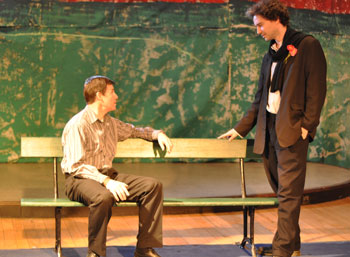
Declan Brennan (The Atheist) and Patrick Dunne (The Dreamer)
Seán O'Casey
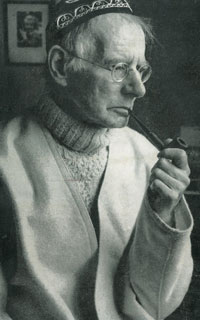
Seán O'Casey (Ó Cathasaigh) was born John Casey on 30 March 1880 in Dublin to a Protestant family. His father died when he was still young and he had a dificult childhood of poverty, poor eyesight, and ill health. A committed socialist, he was the first Irish playwright of note to write about the Dublin working classes.
He was an idealist with a strong sense of justice that is evident in his work. As a young man he was active in the Gaelic League and the amateur theatre movement. Politically he was greatly influenced by the socialist ideals of Jim Larkin’s crusade for the Irish working class and the general strike of 1913, which inspired and drove many to pursue the fight for Irish liberation three years later in the Easter Rising of 1916.
His three early plays about the slums of Dublin, 'The Shadow of a Gunman', 'Juno and the Paycock', and 'The Plough and the Stars' were performed at the Abbey Theatre in 1923, 1924, and 1926 respectively. They were controversial in so far as they did not glorify the violence of the nationalist movement and drew attention to a recurring theme that there were far more innocent dead caught up in the conflict than dead heroes.
'Within the Gates', which came ten years later, represents a move away from the naturalism of these early works, but continues to explore many of the same underlying issues and themes.
The women in O'Casey's plays
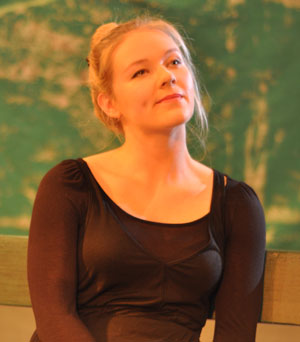
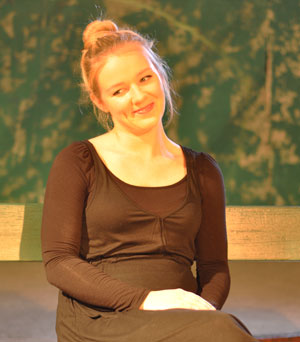
Three of the heroines in O'Casey's plays would have been described in Victorian times and the early twentieth century as 'ladies of the night' of differing degrees.
Rosie Redmond in 'The Plough and the Stars', Angela Nightingale in 'Bedtime Story' and Jannice, the Young Woman in 'Within the Gates', who was described in the original printed edition of the play as the 'Young Whore'.
It has been said that O'Casey has written far more young heroines into his plays that male heroes.
The older women, the mother figures, are equally strong both in character and the colours with which he paints them.
Frank O'Connor, in 'A Short History of Irish Literature: A Backward Look', notes that a unifying theme in O'Casey's early work is "the bitter recognition that while the men dream, drink, drivel, dress up and go play-acting, some woman with as much brains and far more industry sacrifices herself to keep the little spark of human life from going out altogether." The Old Woman in 'Within the Gates' may be written as less of a saint, by the time she is wearied by the world, but is a powerful character nonetheless.
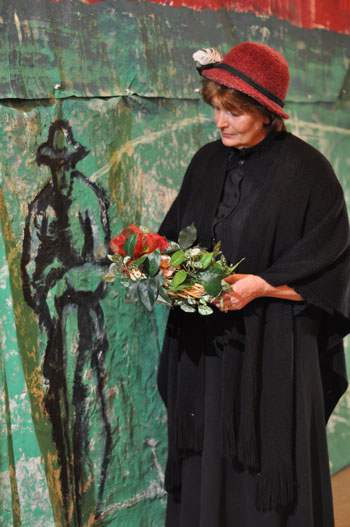
The Old Woman played by Margaret Toomey
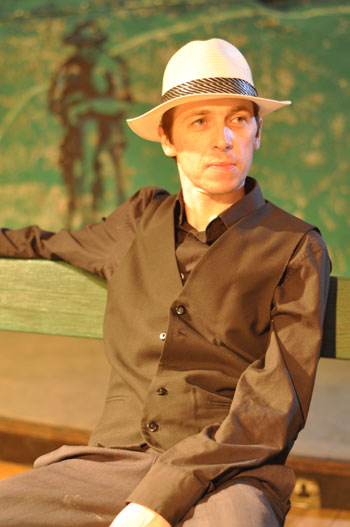
Connolly Heron as The Man in a Straw Hat
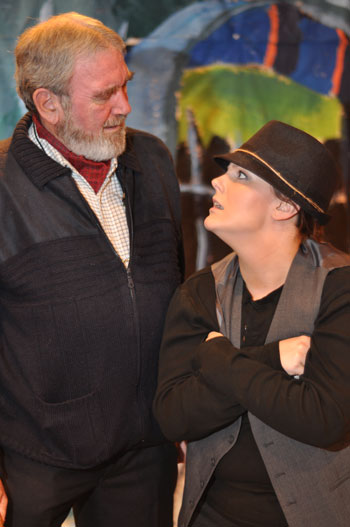
Frank Lonergan (Man with Stick) and Joanne Mallon (Man in Trilby Hat)
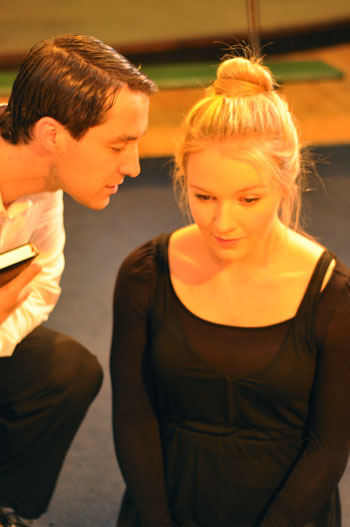
Johnny Williamson (Salvation Army Officer) and Jennifer Barrett
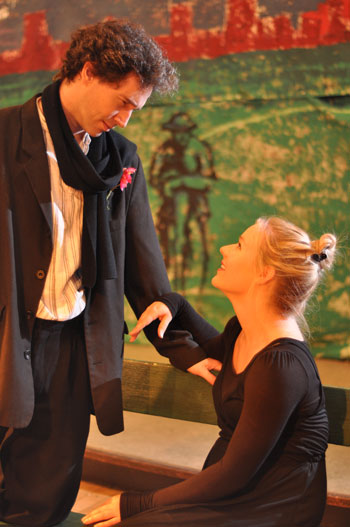
Patrick Dunne (The Dreamer) and Jennifer Barrett (The Young Woman)
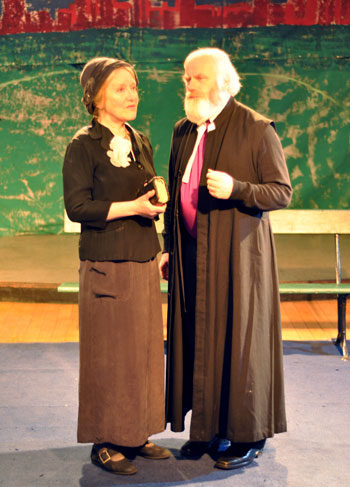
Mary Dowling (Bishop's Sister) and Michael O'Sullivan (The Bishop)
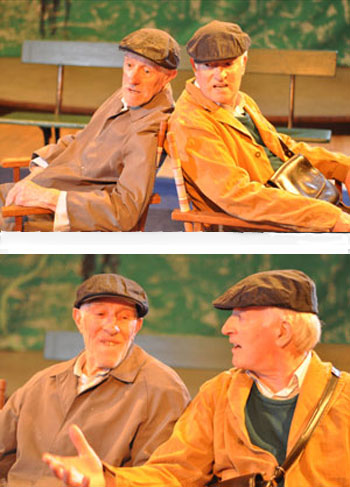
Michael Thornton and Jim Reid (The Attendants)
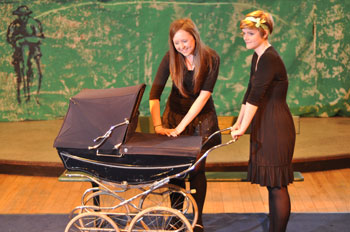
Rebecca McLoughlin and Isla Jeffrey
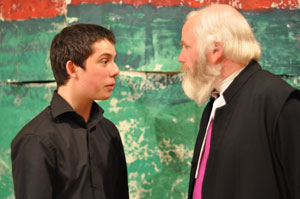
Peter Williamson and Michael O'Sullivan
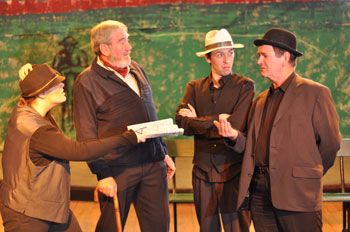
Joanne Mallon, Frank Lonergan, Connolly Heron and Peter Prior
Jennifer Barrett
Jennifer is a graduate of the Gaiety School of Acting two year full-time course. She also trained extensively in the UK with Rose Bruford College and Year Out Drama Co. Theatre credits include Antonio's Revenge, Pericles, Miss Julie (Landmark), When the Hunter Returns (Dir. Liam Halligan). Before taking this part, she returned from Los Angeles having trained with Margie Haber for film and TV.
Declan Brennan
Declan's roles with Dublin Lyric include several works by Yeats, Brecht and Eugene McCabe. His wide range of roles has included Shakespeare's Lucentio in The Taming of the Shrew, Jacques in As You Like It, Dr Who in 'Albert Einstein Meets Dr Who' at the RDS, the lead in Our Town by Thornton Wilder, which opened the Mill Theatre and Victor Velasco in Neil Simon's Barefoot in the Park at Andrews Lane and Smock Alley Theatre.
Mary Dowling
Mary has been involved in Drama for many years and has acted in several plays with the Olivians and Dublin Shakespeare Society. She holds a Diploma in Theatre and Drama Studies from Maynooth College. Most recently she directed Faint Voices by John MacKenna with the 'Shakes.'
Patrick Dunne
This is Patrick's third time performing with Dublin Lyric, having played Seanchan in Yeats's The King's Threshold, and Oedipus in Oedipus the King and Oedipus at Colonus. Patrick performs regularly with the after-dinner Irish theatre group Milshogue, and with Square One in the Mermaid Theatre in Bray.
Connolly Heron
Connolly studied theatre training for 4 years in Bull Alley. This is his third show with Dublin Lyric. Has appeared in many shows including - Hamlet, 100 Minutes and Edinburgh bound La Laconderia.
Frank Lonergan
This is Frank's fourth appearance with Dublin Lyric. Over the years he has appeared in over 40 productions with various groups in South Dublin and North Wicklow and has also directed a number of plays. His favourite role was the Father in Poor Old Joe by John Lynch. In recent years he has also become an enthusiastic choral singer.
Joanne Mallon
Joanne studied Physical Theatre at LAMDA after completing her Masters Degree in Modem Drama and Performance, UCD. Also studied Drama at DIT. Theatre includes Oliver (Little Duke Theatre), The Enemy Within, Two Houses and At Peace (Upstate Theatre), The Kings Threshold and The Hour Glass (Dublin Lyric), Faustus (A.S.I.S). Much voiceover work.
Michael O'Sullivan
Michael has acted in over 30 productions over the years, with Lancos, Swords, Rush and Millbank drama groups. His credits include two musicals with Rush Musical Society. He played Nick in The Last Apache Reunion, Alfieri in A View from the Bridge, Parris in The Crucible and Dr. Rank in A Doll's House, among a host of John B. Keane and Irish plays.
Peter Prior
Peter has been threading the boards for the last fifteen years mainly with The Dublin Shakespeare Society. Favourite recent roles include Bottom in A Midsummer's Night Dream, Duke of Kent in King Lear, Uncle Peter in The Plough And The Stars and The Tramp in Synge's The Shadow of The Glen. Made his debut with Dublin Lyric last year as Federico in The Life of Galileo.
Jim Reid
As an actor, Jim Reid he last played in Dublin Lyric's Sophocles' King Oedipus and Oedipus at Colonus by W. B. Yeats. Last year he directed the first production of Walter Macken's Salute the Servant with the Holding Court Theatre Group at the Axis Theatre, Ballymun. It won the adjudicators award at the AlITF in Winnipeg, Canada.
Michael Thornton
Michael played in the lead in Da, Fr. Jack in Dancing at Lughnasa, Brennan Wthe Moor in Red Roses for Me (O'Casey), Kemp in Entertaining Mr. Sloan. He has played many parts with Dublin Lyric, inc. Hucklebee in the musical The Fantasticks, the Old Man in Yeats' At the Hawk's Well and Purgatory. Film/TV includes Korea, Batchelor's Walk and Your Bad Self.
Margaret Toomey
Margaret has acted in a wide range of productions both amateur and professional over many years. Her work has included many classics of European and international theatre. Having studied English at University College Dublin, she went on to work with the late Deirdre O'Connell in the The Focus Theatre in Dublin on all aspects of theatrical production including the Stanislavski System. She has acted in several Dublin Lyric productions and is currently playing one of the most popular characters in the RTE television soap opera 'Fair City'.
Jess Dunne, Ciara Gallagher, Isla Jeffrey and Rebecca McLoughlin are longstanding members of Stagecoach Drama School. Rebecca has also played in Oliver, Helix; Wizard of Oz at the NCH, 2005; Joseph at the Gaiety. Jess was also in Joseph and Dublin Lyric's The Hour Glass.
...and lastly, a special welcome for Johnny Williamson and Peter Williamson who are making their Dublin Lyric debut.
Dublin Lyric would especially like to thank Booterstown Community Centre, Booterstown Youth Club, Harry Bradshaw, Emma Coogan, Roisin Lonergan and all with the Five Lamps Arts Festival, Liberty Hall theatre management, National College of Art and Design, National Library of Ireland, Sabina O'Donnell, Stagecoach Theatre Arts School in Blackrock, Evan Holton, Karen McDonnell, Duane Watters and the parents of the young people in this show, for their assistance and support with this presentation.
Lecture at the Seán O'Casey Summer School
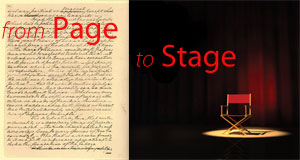
A lecture entitled, 'From Printed Page to Performance – Seán O'Casey's Within the Gates' by Dr. Conor O'Malley, was presented at the Open University of Ireland 'Seán O'Casey Summer School' on Saturday 22 May 2010.
The lecture covered the process of bringing the Dublin Lyric production of 'Within the Gates' to the Larkin Room, Liberty Hall in April 2010.
A copy of the lecture is available here as a PDF file.
Seán O'Casey exhibition in New York
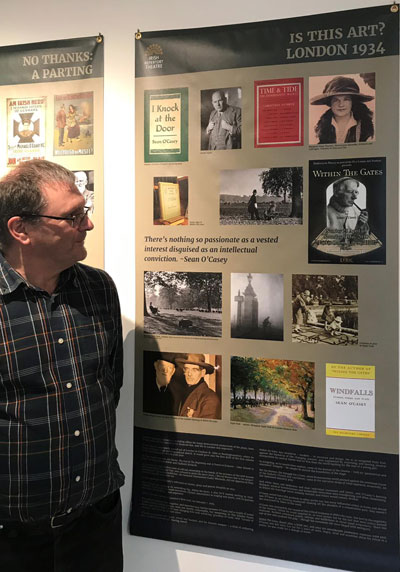
Located at 132 W 22nd St, New York, the Irish Repertory Theatre was founded by Charlotte Moore and Ciarán O’Reilly in 1988 "to provide a context for understanding the contemporary Irish-American experience through evocative works of theatre, music, and dance [...] by staging the works of Irish and Irish-American classic and contemporary playwrights." Its first play was Seán O’Casey’s The Plough and the Stars.
While in New York during the Spring of 2019, Conor O'Malley visited an exhibition at the theatre: The Life and Times of Seán O’Casey. One of the posters from the exhibition is shown here on the right in the photograph with Conor. The posters were part of the background to the exhibition, and the one featured here included an image of the poster for the Dublin Lyric production of Within The Gates in Dublin in 2010.
The exhibition, which was curated by Laoise Mac Reamoinn, was in the Theatre Gallery on the 2nd floor from 20 April to 22 June 2019.
Visitors learned about the life and times of Seán O’Casey through many of the writer's letters and manuscripts, together with a collection of photographs and other material including examples of productions of his work, such as the performances of Within The Gates by Dublin Lyric in 2010.
In a companion page on its website, the Irish Repertory Theatre wrote about O'Casey in its 'Discover' series as "an Irish dramatist renowned for his innovative playwriting style, which balances deeply comic and tragic elements in an atmosphere of stark realism, with emphasis on characterisation of working and lower class Dubliners. [...] Irish Rep is proud to celebrate the work and life of Seán O’Casey as part of our 30th Anniversary Season".
The full summary in the Discover Seán O’Casey (1880-1964) page is available here on the Irish Repertory Theatre website.